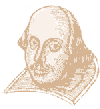 |
The city of Londinium was first established in AD43 by the Roman Emperor Claudius. Before this various tribes, including the Celts had settled the area, but it was the Romans that first founded a proper city.
For years trade in the city flourished, but by the fourth century the Roman Empire was in decline and in AD410 the last Roman soldiers withdrew. The Roman way of life vanished and the city of Londinium was left to squabbling tribes who fought for rule of the city. |
| Between the fourth and ninth centuries London constantly changed hands and the succession of Kings from Saxons to Danes, to Vikings and back again indicates the turbulent times. In the eleventh century, the Danish King Cnut took over and during his reign London replaced Winchester as England's capital. But it was the Anglo Saxons who came to dominate and the oldest street patterns in London date from the Saxon era. |
|
Did you know...
Just 17 years after Londinum was founded, it was attacked and destroyed by the Iceni tribe, led by the legendary Queen Boadicea. But undeterred, the Romans rebuilt the city, this time with a massive defensive wall around it. |
|
In 1042 a Saxon King, Edward the Confessor, came to the throne. A Christian, he devoted 10 per cent of his wealth to building a church two miles to the west of the city of London - the West Minster (Westminster Abbey).
The Abbey was completed in 1065, and Edward was buried in it just ten days later. From this time onwards, London grew around these two areas, Westminster for government, law and the royal court, and the original walled City of London (known today as The City) as the commercial and trade centre.
After the death of Edward, the Norman King William the Conqueror invaded England in 1066 - the famous Battle of Hastings. Whilst subsequently building up his military strength, William built one of England's most famous landmarks, the Tower of London. Norman rule continued for nearly 100 years and under it London prospered.
In 1154 the Plantagenet Henry II succeeded to the throne, and the next two centuries were characterised by a three-way power struggle between the crown, the church and tradesmen, represented by the Lord Mayor and the city guilds.
|
| The early roots of modern British Government were set down during this period. The first step towards regulating the power of the King and the establishment of personal rights was the signing of the Magna Carta in 1215. And the fourteenth century saw the establishment of the House of Lords in the Palace of Westminster (now known as the Houses of Parliament) and the House of Commons in the Westminster Abbey Chapter House. |
|
Commerce and trade were increasing rapidly during this period and the population of London soared to around 100,000 by 1300. But while the population grew, sanitary conditions weren't keeping up, and this led to one of the greatest disasters of the Middle Ages - the Black Death of 1349. About one third of England's population died from the plague, while the figure in London was nearer a half.
The beginning of the fifteenth century saw the rise of the house of Lancaster with the crowning of Henry IV, Duke of Lancaster. The Lancastrians ruled until Richard, Duke of York, challenged Henry VI in 1455. This led to the famous power struggle known as the War of the Roses between the House of Lancaster (symbolised by a red rose) and the House of York (symbolised by a white rose). The house of York won when Edward IV came to the throne for a second time in 1471
| The War of the Roses had truly ended by the time Henry VII (the first Tudor king) became king in 1485 and peace and prosperity had returned. With the opening of the oceans with new trade routes to Africa, America and the East, London became very important as a port, and it was one of the biggest cities in Europe. Commerce once again flourished, the various craftsmen's guilds gained power, and the population had started to rise again. |
|
Did you know...
The fifteenth century saw the invention of the first printing press by William Caxton. When Caxton died his apprentice Wynkyn de Worde moved the business to Fleet Street, which remained the centre of Britain's printing and publishing trades for hundreds of years. |
|
In 1509 Henry VIII, the most notorious Tudor king, took the throne. In his search for a male heir, Henry VIII quarrelled with the Catholic Church (over the right to divorce) and so he broke away to set up the Church of England, of which he was head. He dissolved the monasteries, and in London over fifty churches were closed, some becoming hospitals.
Did you know...
Most famous for using the axe to settle disputes, Henry VIII also founded the Royal Navy, and much of the land he requisitioned for royal hunting ground became London's famous parks, for example Regent's Park, and Hyde Park. |
|
| The Tudor era is one of the most well known periods of English history and it was a turbulent time. Henry VIII is infamous for having had six wives, but only one, Jane Seymour, provided him with the longed for male heir - Edward VI. Edward died young and so the throne went to the Catholic Mary I.
Queen Mary tried to re-instate Catholicism and so her reign was characterised by religious persecution - which gave her the nickname "Bloody Mary". She died without an heir and so the throne went to her non-Catholic half-sister Elizabeth who was crowned Elizabeth I. |
|
| The reign of Elizabeth I (1558-1603) was a glorious era for England - Sir Walter Raleigh brought potatoes and tobacco back from America, Sir Francis Drake defeated the Spanish Armada and William Shakespeare was writing his many plays. In London, the population doubled to 200,000 and many landmark buildings were built, for example The Rose and Globe Theatres, and the Royal Exchange. |
 |
The first recorded map of London was published in 1558 and John Stow's Survey of London which gives a first hand account of Tudor London was published in 1559. Today you can see a monument to Stow in the church of St Andrew Undershaft.
After Elizabeth's reign, James VI of Scotland became James I of England, and again unrest arose. James' extravagant taxation and foreign policies led to conflict between the Crown and Parliament. And Catholic problems resulted in the infamous Guy Fawkes trying to blow up the Houses of Parliament with his gunpowder plot.
Did you know...
In the 17th Century, the River Thames had so much rubbish in it that in winter it would actually freeze over. Londoners took advantage of the ice by holding huge Festive Fairs on the frozen river. |
|
| James was succeeded by Charles I, and the troubles between Parliament and the king continued. Civil war broke out in 1642 with Parliamentarians led by Oliver Cromwell pitted against the crown. The Parliamentarians won and Charles I was beheaded in 1649. Cromwell ruled for 11 years, but his harsh rule was very unpopular and so by 1658 Parliament had voted to return the Stuart monarchy. |
|
In London, the next few years were to be overshadowed by two great disasters. In 1665 the plague again struck England and in London alone over 100,000 people were killed. And on 2nd September 1666 a fire started in a bakery in Pudding Lane. Strong winds fanned the flames and because London's houses were built mainly from wood and thatch, the fire spread quickly.
All in all the Great Fire of London burnt for three whole days, after which 80% of London lay in ruins. 87 churches and more than 13,000 houses were burnt to the ground, yet only eight people were killed. And the fire actually brought benefits - the plague was wiped out, and the overcrowded streets of the city could be rebuilt from scratch.
| The most prominent name in the rebuilding of London was Christopher Wren, most famous for his masterpiece, St Paul's Cathedral, finished in 1711.
At the same time, many of the wealthier merchants chose to rebuild their homes in more spacious surroundings to the west of The City, today's West End. And as chances for capital investment grew, The City started to become a financial, rather than trade, centre. |
|
Did you know...
A Monument to commemorate the Great Fire can be found in The City near London Bridge. It is 202 feet high and if laid on its side it would reach to the exact place in Pudding Lane where the fire started. |
|
The throne remained with the Stuarts until Queen Anne, who left no heirs. So in 1714 the throne passed to a distant relative, George of Hanover, who had been raised in Germany.
George I appointed Rupert Walpole to be his intermediary between throne and Parliament and so the powerful position of Prime Minister came into being.
Walpole was given 10, Downing Street as his place of residence, and to this day the building remains the official residence of Britain's Prime Ministers.
In the 18th Century, London grew at an astonishing rate, both in size and population. But there was really two Londons - one the fine streets, squares and mews of Bloomsbury, Mayfair and Marylebone, the other the slums of the poor. The unbalance of wealth inevitably led to crime and so the Bow Street Runners were formed as the country's first police force in 1751.
 | The 18th Century was also a time of great creativity and achievement, much of it centred in London. Several significant philanthropists founded schools and hospitals, and, among others, Handel wrote music, Hogarth painted and Fielding and Boswell wrote. Most importantly the steam engine was invented, heralding the start of the industrial revolution. |
At the start of the nineteenth century, Queen Victoria came to the throne and there were over a million people in London, making it the largest city in Europe. It was also the centre of an empire that covered a quarter of the world. The industrial age was in full swing and so modern London began to take shape as new docks were built, railways opened and the city expanded.
The Great Exhibition in 1851 symbolised the spirit of the Victorian age - achievement, discovery, progress and power. It was held in a massive building of iron and glass - the Crystal Palace (which stood at Sydenham until fire destroyed it in 1936), and the profits built the modern day Science Museum and the Victoria and Albert Museum.
Other Landmarks from the Victorian Age include Big Ben which first rang in 1859, The Albert Hall built in 1871 and Tower Bridge built in 1894.
| By the end of the century, London was in full swing, and socialites such as Oscar Wilde, Gilbert and Sullivan and George Bernard Shaw were setting the social stage. Things were progressing rapidly, for example electric lights lit the Strand for the first time in 1878 and electric trams started running in 1901. The first motorised bus was introduced in 1904 and by 1911 horse drawn buses had all but disappeared. |
 |
However the early years of the 20th Century were also unsettled ones, with, for example, the Suffragettes demanding voting rights for women. And of course, in 1914, war was declared against Germany. The invention of the aeroplane meant that London was attacked from the air for the first time and bombing raids left over 600 people dead.
Did you know...
The Suffragettes used the colours green, white and violet to symbolise their cause - the colours' initials standing for Give Women the Vote. |
|
| After Britain had won the war, a post war "joie de vive" swept through London's social scene, and the next decade became known as the "Roaring Twenties". Yet there was also economic crisis, with the General Strike of 1926 and the Stock Market Crash of 1931. |
|
In the early 20th Century, London expanded at a phenomenal rate and the suburbs spread rapidly. Inventions such as radio, the cinema and television entertained the masses, and the arts in London flourished with the likes of Virginia Woolf and Noel Coward setting the pace. But peace and stability wasn't to last for long.
For the Monarchy power was on the wane, and in 1931 their position was further threatened by Edward VII's abdication in order to marry the divorced American Wallace Simpson, an event that rocked the whole of the British establishment.
| And then, in 1939, Britain went back to war against Germany. Around 600,000 children, women and the elderly were evacuated from London and taken into homes in the country as Britain's capital prepared for the German bombers.
In September 1940 the bombs began to drop and London suffered from 57 nights of continuous bombing, which became known as The Blitz, with about six further months of sporadic bombing raids. Whole streets were destroyed and thousands of civilians killed or injured. |
|
|
The War ended in 1945 after a total of around 18,000 bombs had been dropped on London, and once again a massive rebuilding programme began. A new Labour government introduced the National Health Service and nationalised transport, gas, electricity and postal services.
The highlights of London's post-war calendar include the Olympic Games held in London in 1948, the Festival of Britain in 1951 (whose lasting legacy is the massive arts centre on the South Bank) and the coronation of Queen Elizabeth in 1953. During the same period, the first flight from Heathrow airport took place in 1946, and the first red 'Routemaster' bus, the vehicle that has come to symbolise London, went into service in 1956.
Did you know...
In 1956 a Clean Air Act was passed banning the burning of coal within London, with a further Act in 1968. These were the result of the famous London fogs - one fog that started in 1879 lasted for five whole months, and as late as 1952 over 4,000 people died because of a fog. |
|
| However, in the 1950's, London actually declined in population, with many Londoners moving out of the city. This led to a shortage of workers, and so members of the former colonies, particularly the West Indies, were encouraged to emigrate to England. The influx of immigrants to London has made it one of the most cosmopolitan cities in the world - it is estimated that over 100 languages are spoken within Greater London! |
|
Then the swinging 60's saw London at the height of fashion, both in terms of clothes and music with names like The Beatles, The Rolling Stones and fashion designer Mary Quant all frequenting the capital. But by the 1970s the city was again in decline. The decade is often remembered for economic problems and the start of the IRA's bombing campaign on mainland Britain. But in the mid-70's the bright colours of the punk scene of the King's Road brightened the decade a little.
In 1979, Margaret Thatcher became Britain's first woman Prime Minister and the 80's are known as the Thatcher Years. Business prospered and "yuppies" ruled the roost, yet unemployment still rose, particularly in ethnic communities, sparking riots such as those in Brixton 1981.
The global economy was unstable and so the business boom couldn't last forever. The end of the 80's saw a severe worldwide recession, and London suffered badly. In 1992 Thatcher was replaced by John Major, but the early 90's were still marked by economic problems. The Conservative Party lost support, and so May 1997 saw Tony Blair elected to government, the first Labour Government for over 18 years.
There is little doubt that in the last few years London has seen an upsurge in enthusiasm and optimism, and so the atmosphere is buzzing and alive. London towards the end of the millennium is on the up.
| Home to Britpop, numerous famous artists, chefs, fashion designers and many darlings of the social scene, London is a city at the height of fashion and popularity - a state of affairs that the media has wittily dubbed "Cool Britannia" - making it a very exciting city to visit indeed! |
 |
Click here to find out about the Kings and Queens of England
Copyright © 1995 to 2016 Smooth Hound Systems
Smooth Hound Systems accepts no liability with regards to the accuracy of the information on this site.
Users are advised to double check information such as dates, times, prices etc.





